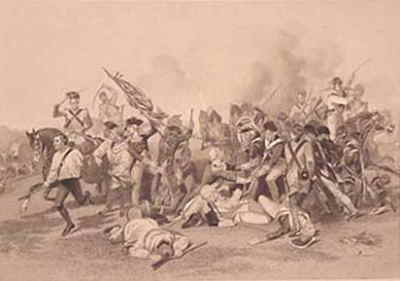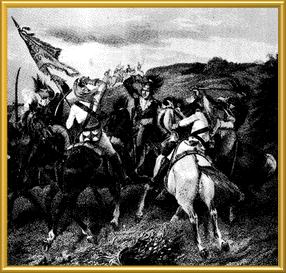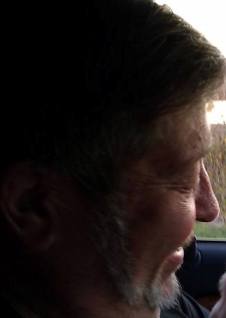The Adventures of Ollie-Dare - Chapter 13
OLLIE-DARE Meets The Circus
Spring was in the air and the Great Forest once again
was alive with activity. The creatures of the forest were busy
planting, and enjoying the new Spring air. Flowers were beginning to
bloom in a colorful array, and the meadows were becoming greener.
Ollie-Dare and his best friends, Jimmy the Rabbit, Ace the Coon, and
Banjo the Fox, were having tea when suddenly strange music filled the
air. Ollie-Dare and his friends followed the sounds into the meadow
that lay on the edge of the Great Forest, and before them was a sight
like none they had seen.
Huge wagons with colorful pictures and writings were
assembled in a large circle. Men and women in strange costumes could
be seen running to and fro. Noises like none the creatures of the
forest had heard before filled the air, and music with a bell rhythm
sounded out from the wagons. By now the forest walls were lined with
creatures of the forest, some openingly staring, and others peeping
through willow branches and tall grasses.
Ollie-Dare being the wise bear he was, decide to
venture closer, while telling the others to stay where they were.
Slowly Ollie-Dare walked to the big wagons, where he was met by a tall
man with long grey hair. At first, the man stopped and stared, and then
with a smile said, "May I ask who you are, for you are not one of our
animals?"
Ollie-Dare stood straight and tall, and in a gruff voice answered, "I am Ollie-Dare, and you have entered my forest."
"I am Wilford the Circus Clown, and before you is
the greatest show on earth, The Circus," said the man. "We mean you no
harm, for we need only to rest because we have traveled far, and are
headed for the city just over the mountain. We are to perform there
next week. Come, let me introduce you to all here at the circus, and
you shall see that we are harmless."
Ollie-Dare entered the large circle of wagons to see
all shapes and sizes of men and women, and creatures like none he had
seen before. First he was introduced to Rick, the ring master, a tall
slim man with a large mustache, and a very tall hat. He was then taken
to see Leo the lion trainer, and some of the biggest cats you could
imagine. He met Beth the horse woman, and her beautiful horse Silver
Streak, then there was John the Trainer and his animals, the elephants.
Ollie-Dare was amazed at the sight before him, and
lingered watching the graceful movements of such large animals. He met
clowns of all different sizes, a fire-eating man, the strong man, all
kinds of dogs doing tricks, and a strange and funny creature called a
monkey, and rope-walkers, and dancers.
Everyone was very nice to Ollie-Dare and he was
happy that once again strangers had entered his forest with new things
for him to see. He also knew that his friends would be very worried by
now, and with invitations for all the forest creatures to return later
for a small show, Ollie-Dare said his fare-wells.
On re-entering the forest, creatures large and small
gathered to hear what Ollie-Dare had to tell. With eyes of wonder, they
then left to tell others within the forest of the strange events taking
place, and of the invitation to see it themselves that very day.
As dusk settled upon the forest, Ollie-Dare and all
the forest creatures gathered at the meadow's edge for the beginning of
the night's event. One by one, Ollie-Dare let his forest creatures
enter into a huge tent structure wkere they were seated on wooden seats,
and the strange music filled the air.
Suddenly, the Ring Master appeared and in a loud
voice announced "Welcome to the Greatest Show on earth, The Family
Circus!"
Tall and short men appeared dressed in bright
costumes with hair of many colors, and round, red noses. They ran here
and there, tripping and throwing things in the air, and making everyone
laugh with glee. Then entered the elephants and their trainer to the
gasp of the forest creatures. Large though they were, the elephants
performed gracefully, bowing and parading before them. They did tricks,
and Nibbles the Squirrel rode the back of one of the elephants to the
amusement of her forest friends.
Next entered a large man with arms the size of tree
trunks, and he bent and twisted metal pipes. Following him came a
beautiful lady and her horse. On his back she twirled and turned, and
went on and off. Large cats called tigers performed by leaping through
fire rings; rope-walkers and high wire acrobats, dogs and monkeys, gave
performances to lots of applause and laughter.
At the end of the show, Ollie-Dare and his friends
were given a sweet called cotton-candy, and caramel-covered apples,
along with a
cool drink. Balloons that swayed back and forth on long stings, and
pictures of all the performers were handed out. The time soon came for
Ollie-Dare and his friends to return home. So with promises of
returning the next morning to say farewells, they went on their way.
And as the sun appeared over the meadow the next
morning, a stream of forest animals could be seen coming and going from
the circus wagons, each taking their new friends a small gift from the
forest. Some gave baskets of food, others small tokens from the forest
walls.
Later as Ollie-Dare, Jimmy, Ace, and Banjo sat
drinking evening tea, they talked of the things they had seen.
Ollie-Dare again thought of how his old eyes had seen much in his years,
but there seemed to be so much he hadn't seen yet. He gave thanks for
each new day, and the wonders they always brought with them.
And as Jimmy talked of all the wonders of his day,
and how he would like to go with the circus traveling around the cities,
Ollie-Dare smiled. He thought of what wonderful treasure lay awaiting
them, right here in the Great Forest!
©2002 Rebecca Morris
Next month: Ollie-Dare Goes to The Great Lodge
Click on author's byline for bio and list of other works published by Pencil Stubs Online.

















